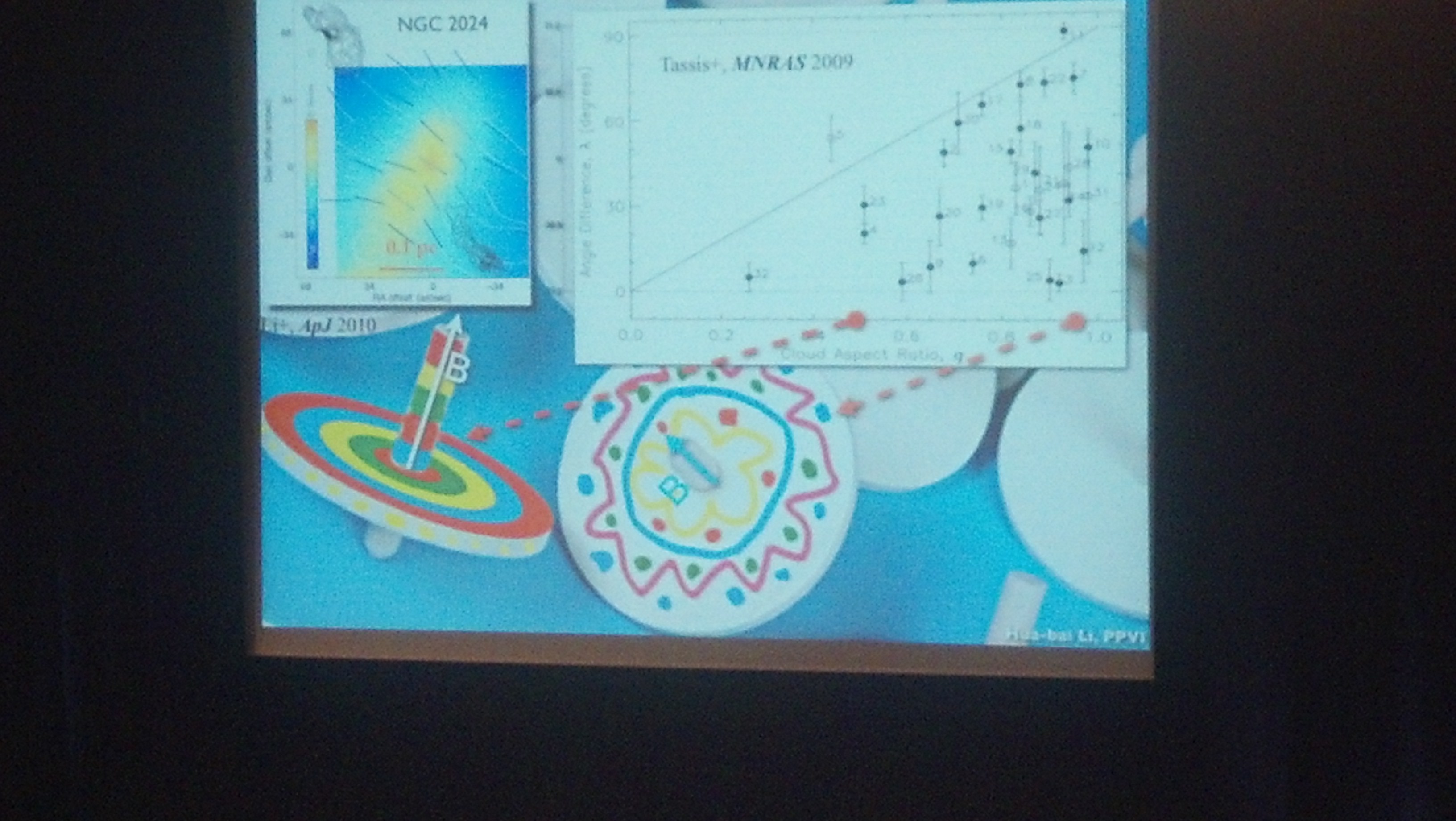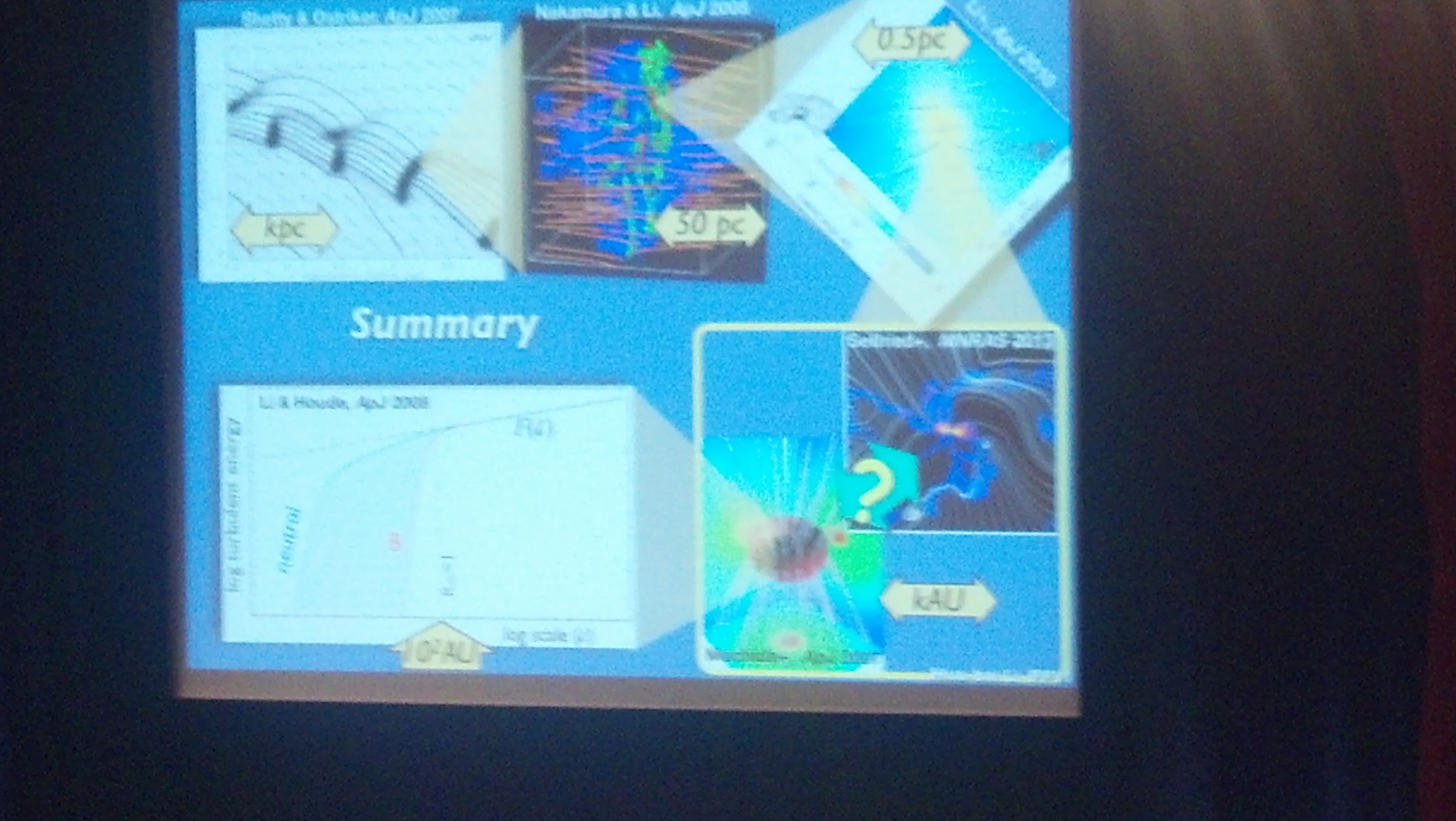THE LINK BETWEEN MAGNETIC FIELDS AND CLOUD/STAR FORMATION
Authors:
H.-B. Li (MPIA, Heidelberg, Germany), A. Goodman (Harvard-Smithsonian Center for Astrophysics, United States), M. Houde (University of Western Ontario, Canada), Z.-Y. Li (University of Virginia, United States), G. Novak (Northwestern University, United States), T. Sridharan (Harvard-Smithsonian Center for Astrophysics, United States)
The question of whether magnetic fields play an important role in the processes of molecular cloud and star formation has been debated for decades. Recent observations reveal a simple picture that may help illuminate these questions: magnetic fields have a tendency to preserve their orientation at all scales that have been probed - from 100-pc scale inter-cloud media down to sub-pc scale cloud cores. This ordered morphology has implications for the way in which self-gravity and turbulence should interact with magnetic fields: both gravitational contraction and turbulent velocities should be anisotropic, due to the influence of dynamically important fields. Such anisotropy is largely observed. Here we review these recent observations and discuss how they can improve our understanding of cloud/star formation.
Content
Visualize field morphology: Turbulent or directed?
Can't determine importantce of B-fields just by looking at the map
If kinetic dominates B-field, B-fields will simply trace cloud morphology. Else, they will define it...
Alfvenic Mach number important...
B-field orientation and strength remains controversial on all scales.
- Observational tools
- Dust grain alignment
- polarization of thermal emission A_V > 100mag
- polarization of reflected starlight A_V < 5 mag
- Zeeman effect circular poln: line-of-sight component
- linear line polarization
M33 SMA observations
- synchrotron show low-density medium
- 6 most massive clouds (for stronger signal)
- offset between CO polarization and spiral arms is double-peaked at 0,90 deg
Crutcher Zeeman observations
Turbulence lognormal column PDF.
- Higher column deviations from B-fields? "turning point" is the gravitational critical density
Orion:
- B-fields perpendicular to elongation of "cores" (perpendicular to filaments?)
- Mean core B-fields are approximately parallel across Orion
For local clouds, B-field of the "ICM" (inter-core medium?) either antiparallel or parallel
Clouds flatten: collapse only along b-fields. Nice top illustration

Disk formation:
- B-braking requires coupling between disk and B-fields
- Neutral and Ion turbulent dispersion is different because of B-induction
- (HCO+ systematically wider than HCN)
- Estimate decoupling scale ~100's au
Recent:
- Chapman 2013: CSO B-fields perpendicular to disk
- Hull 2013: CARMA B-fields uncorrelated with disk angles
- Tomisaka 2011: Large-scales, perpendicular to disk. Small scales, randomized.
- transition from poloidal to toroidal B-field
Conclusions
Orion has ordered B-fields from large to small scales
In general, large-scale fields lead to squishing along B-fields, small-scale

Questions
- Q: Benetti - Are you only picking out the large-scale components when there may be stronger small-scale fields? How can you be sure you're seeing the dominant component?
- A:
- Q: Strong reduction of degree of poln in core. Are you sampling field in core?
- A: Poln correlates with line widths?
- Q Tan: Nice results. Are clouds are sub- or super-critical? If you account for extra turbulence, they are just about critical?
- Q Tan: What about sampling IMF from field strengths that produce massive cores?
- A: No idea
- Q Chris McKee: Padoan's group - let weak B-field amplify in simulations. Only by assuming input strong-B-field do we get correlation between large and small scales.
- A: